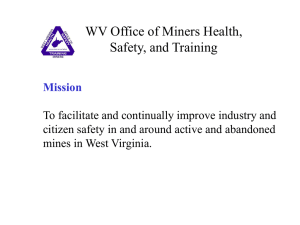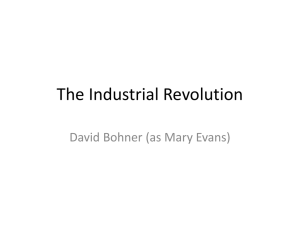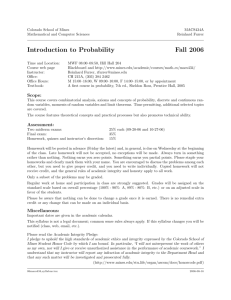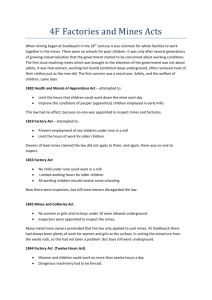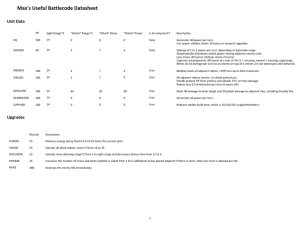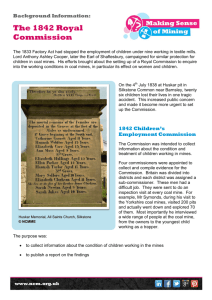Factories and Coalmining
advertisement
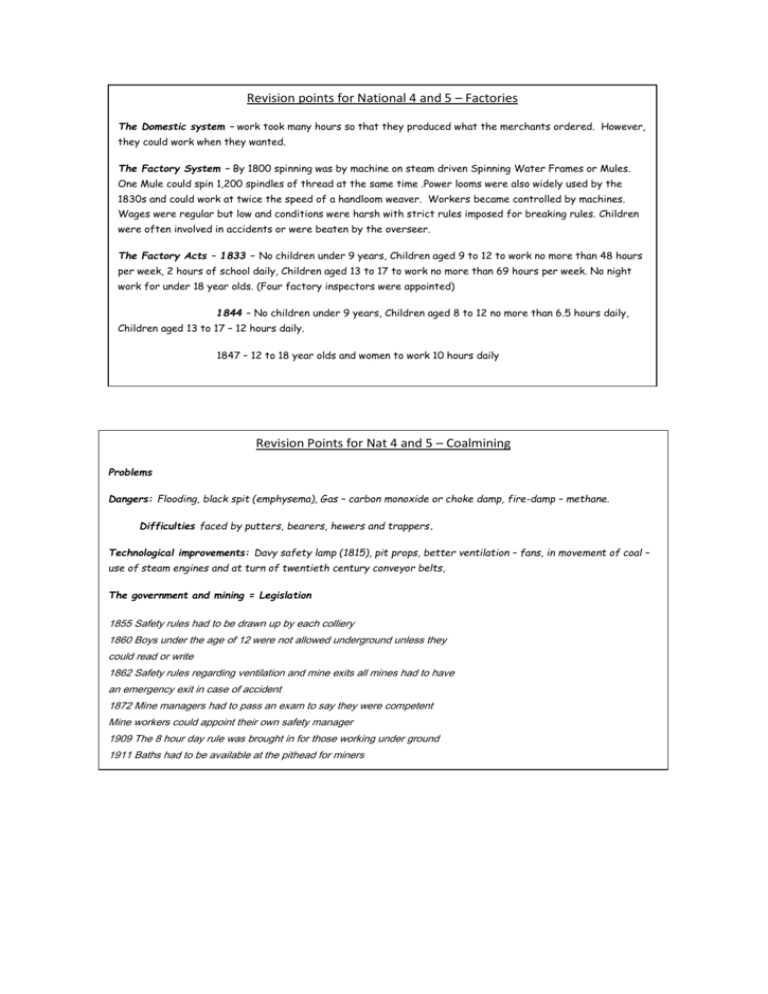
Revision points for National 4 and 5 – Factories The Domestic system – work took many hours so that they produced what the merchants ordered. However, they could work when they wanted. The Factory System – By 1800 spinning was by machine on steam driven Spinning Water Frames or Mules. One Mule could spin 1,200 spindles of thread at the same time .Power looms were also widely used by the 1830s and could work at twice the speed of a handloom weaver. Workers became controlled by machines. Wages were regular but low and conditions were harsh with strict rules imposed for breaking rules. Children were often involved in accidents or were beaten by the overseer. The Factory Acts – 1833 – No children under 9 years, Children aged 9 to 12 to work no more than 48 hours per week, 2 hours of school daily, Children aged 13 to 17 to work no more than 69 hours per week. No night work for under 18 year olds. (Four factory inspectors were appointed) 1844 – No children under 9 years, Children aged 8 to 12 no more than 6.5 hours daily, Children aged 13 to 17 – 12 hours daily. 1847 – 12 to 18 year olds and women to work 10 hours daily Revision Points for Nat 4 and 5 – Coalmining Problems Dangers: Flooding, black spit (emphysema), Gas – carbon monoxide or choke damp, fire-damp – methane. Difficulties faced by putters, bearers, hewers and trappers. Technological improvements: Davy safety lamp (1815), pit props, better ventilation – fans, in movement of coal – use of steam engines and at turn of twentieth century conveyor belts, The government and mining = Legislation 1855 Safety rules had to be drawn up by each colliery 1860 Boys under the age of 12 were not allowed underground unless they could read or write 1862 Safety rules regarding ventilation and mine exits all mines had to have an emergency exit in case of accident 1872 Mine managers had to pass an exam to say they were competent Mine workers could appoint their own safety manager 1909 The 8 hour day rule was brought in for those working under ground 1911 Baths had to be available at the pithead for miners 1917 The working day was reduced to 7 hours Laissez-faire attitude Royal Commission set up in 1842 (a report to help see the problems in the mines) Coal Mines Act, 1842, stopped women and children working underground, 1850 - mines open to government inspection, 1872 - Mining Act, all mines to be managed by a trained and “certified” person. N.B – these are brief points to help you revise you should be able to explain things in more detail in an exam or test!
